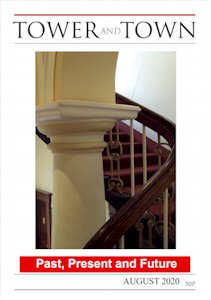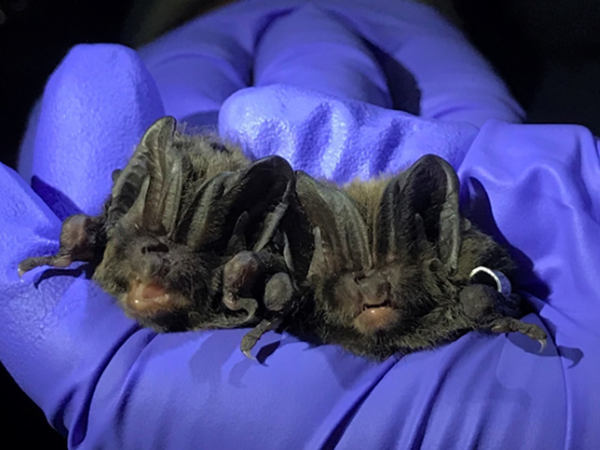

Tower and Town, August 2020 (view the full edition) (view the full edition)Wildlife Superstars Of The Savernake Forest - The Barbastelle Bat The Barbastelle bat (Barbastella barbastella) is one of the rarest bats in the UK and Europe, with a wide and patchy distribution; in the UK it is confined primarily to the counties of southern England. It can be a tricky species to study and it remains one of the most poorly understood bat species in the UK. The Barbastelle bat is unlike other bats found in the UK - its fur is a glossy black, often white-tipped (giving a beautiful frosted appearance); this, and its characteristic ear structure, makes this species almost unmistakable. Its scientific name, Barbastella, comes from the Latin for "starry beard", and indeed its "beard" is frosted, like stars in the night sky. The Barbastelle bat is a species of wooded landscapes; small colonies typically roost in trees, within splits and cavities, often utilising multiple trees and moving between them regularly, perhaps every couple of days. When foraging, however, Barbastelle bats leave the woodlands to forage across the wider landscape, using corridors such as rivers, hedgerows and woodland edge to move rapidly to their preferred foraging area; amazingly, radiotracking studies in the UK have recorded them foraging 30km away from their roosting site - that's a long way for a bat weighing 7-8 grams! These habits, however, leave the Barbastelle bat at some risk from mankind's incursion into the natural environment. They are very averse to artificial lighting; new developments and lit infrastructure such as roads can block their access to important foraging areas. They prefer older woodlands with abundant standing deadwood within which they roost and breed. The veteran trees of the Savernake Forest, and the surrounding landscape, provide important roosting sites for them. Wiltshire Bat Group has studied the Barbastelle bats and other bat species of the Savernake Forest and Marlborough since the early 1990s. This has involved long-term study of a Barbastelle maternity group at the southern end of the Forest. During July 2019 the Group undertook a week of intensive study, catching and radio-tracking bats to learn more of where they roost and breed, where they forage and the landscape features they use to access their foraging areas. With thanks to the Forestry Commission for supporting our work in the Savernake Forest, and to Bat Conservation Trust and Buglife for providing funding via Back from the Brink's Ancients of the Future. Further information: Gareth Harris |